
by Lynchpin Design Company | Sep 30, 2014 | LPD, Lynchpin Design Company, Lynchpin Design Company, Lynchpin Design Company
Such great weather over the weekend. Saying goodbye to summer is never easy, but it means pumpkin carving, homemade pressed cider, and more time in the shop! Thank you for an awesome summer season… Christmas is coming and we’re ready to rock and roll with your custom projects! — with Travis Higgins.


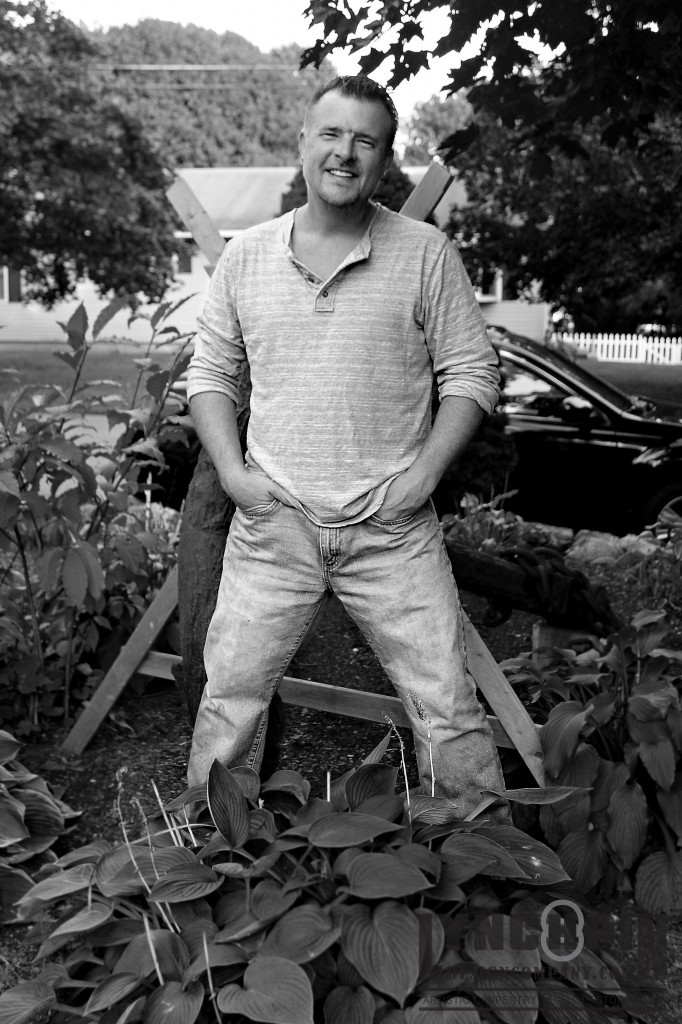

by Lynchpin Design Company | Nov 17, 2013 | LPD, Lynchpin Design Company, Lynchpin Design Company, Lynchpin Design Company
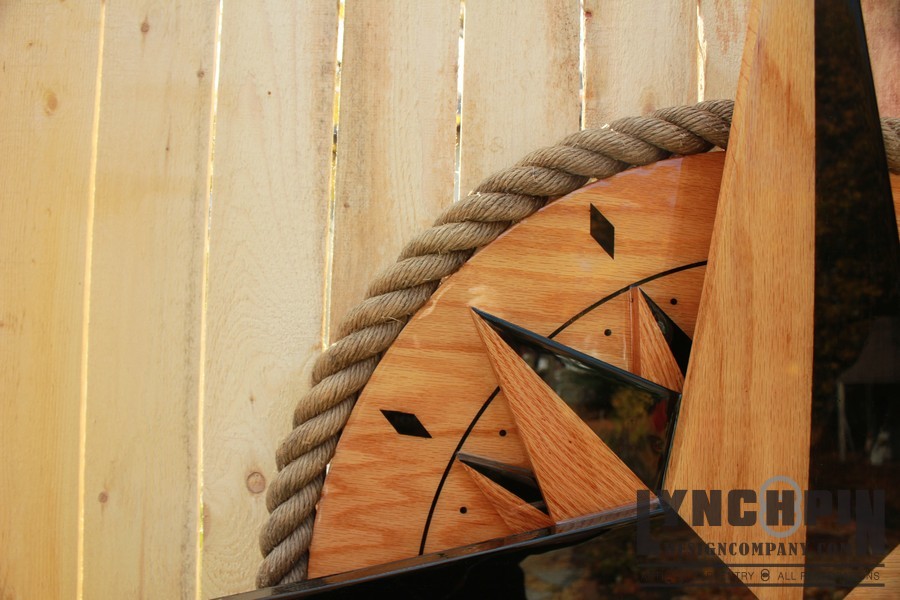
Along with the Age of Exploration, came a need to implement a standard compass. In ancient times, maps were typically drawn from whatever perspective the map maker
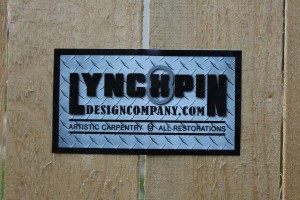 preferred, and Northwas rarely aligned with the top edge. The Compass Rose became a definitive figure displaying the orientation of the cardinal directions, north, south, east and west on a map or nautical chart.
preferred, and Northwas rarely aligned with the top edge. The Compass Rose became a definitive figure displaying the orientation of the cardinal directions, north, south, east and west on a map or nautical chart.
The compass rose was painted on ships and vessels. It soon became common for men at sea to place nautical star tattoos on their forearms and hands. It was believed to offer protection, security, and guidance. Over time the North point on a compass rose became a symbol for finding your way home safely and symbolically finding your way in life. Because many sailors were deeply superstitious with a rich history of lore about life and death at sea, they were always looking for lucky charms. A historic fear of life and death at sea caused many sailors to become deeply superstitious, and thus the compass rose became a strong symbol of luck and a desire to return home safely.
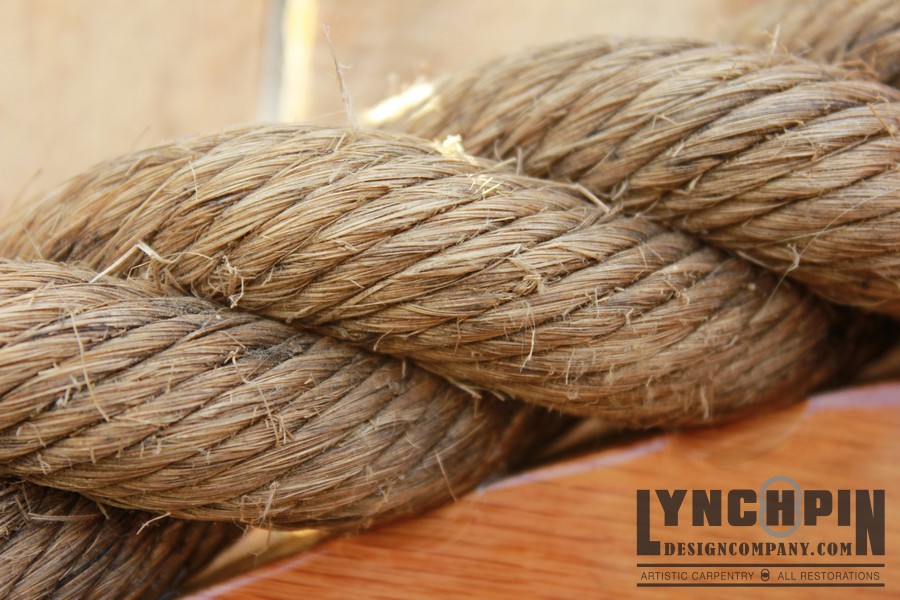
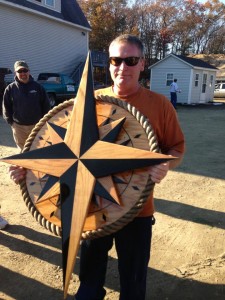
You will often hear a compass rose referred to as a windrose, however the windrose is actually an ancient version of a compass rose, which personified 32 compass directions as winds.
Today the use and idea of a compass rose is found on or featured in almost all navigation systems, including nautical charts, NDB and VOR systems, and some GPS sets. There are multiple variations of the compass rose. Today, compasses use the eight principal directions (N, NE, E, SE, etc.).
-
4-point compass roses use only the four “basic winds” or “cardinal directions” (North, East, South, West), with angles of difference at 90°.
-
8-point compass roses us the eight principal winds—that is, the four cardinal directions plus the four or “ordinal directions” (NE, SE, SW, NW), at angles of difference of 45°.
-
16-point compass roses contain half-winds, at angles of difference of 221⁄2°. The names of the half-winds are simply combinations of the principal winds to either side, e.g. North-northeast (NNE), East-northeast (ENE), etc.
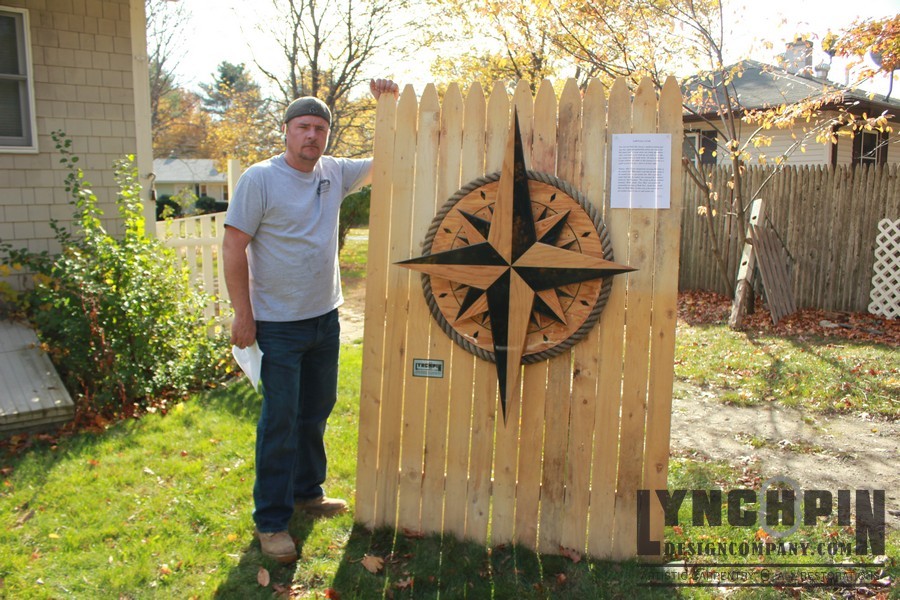
This three dimensional hand-made commissioned piece was constructed using oak and 90-year-old nautical rope, displaying the 16-point version of the Compass Rose.

by Lynchpin Design Company | May 3, 2013 | LPD, Lynchpin Design Company, Lynchpin Design Company, Lynchpin Design Company
This Door knob Coat rack is a hand-crafted one-of-a-kind piece made from materials with an interesting back-story.
The door knobs we’ve used in this piece were first seen in the early 1800s. We know that that they were original to the Cambridge, MA home that we got them from. The metal shanks are made of cast iron, and the base of the knobs are made of brushed brass. They’re known as “mineral knobs”, which are natural glacial clay that have a “Albany slip” glaze or a clear glaze composed of feldspar and flint.
The clays found around the Albany NY area were a natural glacial clay with a high iron content, and were used extensively in the early 1800s pottery industry. The “Albany slip” glaze would enhance the color of the material and sealed the rough body texture caused by the drying clays after they were formed to their desired shape.
Another glazing method used a clear glaze of composed mainly of feldspar and flint, and this would permit the marble-like swirls of the various clays used in the knob body to show through. So it is easy to mistake this naturally derived product for genuine marble.
via Those brown “Bennington” door knobs | The Brass Knob
The wood used in this piece is among the hardest and most stiff of the woods in the world. It’s called Purpleheart Wood. And it’s simply beautiful. Truth be told, we’ve actually fallen for this wood, and plan to use it more frequently in the future! So, why are we hooked?
Aside from general appearance and feel, the flowering trees (called Peltogyne, known as Purpleheart or Amaranth) are native to the rain forests of Brazil, Guyana, and Suriname.
The trees are prized for their beautiful heartwood which, when cut, quickly turns from a light brown to a rich purple color. Exposure to ultraviolet (UV) light darkens the wood to a brown color with a slight hue of the original purple. The longer the wood is exposed to UV lights (sunlight), the colour of purple slowly changes from a light purple to a substantially chocolate-purple colour.
via Peltogyne – Wikipedia, the free encyclopedia.
This beautiful wood is commonly used in cabinetry, flooring, furniture, and for guitar and musical instrument inlays. We had to take special precaution when working with this wood, as exposure to the dust generate during cutting and sanding causes nausea and irritation. It also emits a resin that is extremely damaging to our machinery, and is easily burned if cut improperly.
Moderately hard to work but takes a glossy, lustrous finish. Lacquer finish will best preserve the color.
via Purple Heart Hardwood Lumber from Woodworkers Source.
But, even with all of the challenges we have faced with Purpleheart Wood, we were quick to reap our reward when we began to see the finished piece emerge. It truly is the smoothest wood we’ve even laid our hands on. And the color is quite breathtaking. It’s not something you see everyday, and it’s sure to grab someone’s attention.
This multi-functional piece can be used in many creative ways. Sure, you could hang it horizontally and use it as a coat rack. Or you could hang it vertically as a stand-alone show piece. Perhaps our favorite way is to hang it horizontally to display your family photos like Jennifer from Pin or Pass did below. We love the ribbons, and even love the idea of “stacking” photos, so they hang vertically.
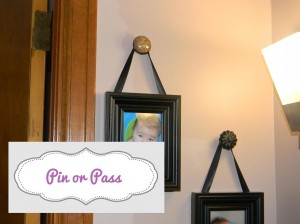
via Pin or Pass: A Fun Way to Hang Your Picture Frames.
via Pin or Pass: A Fun Way to Hang Your Picture Frames.
This piece comes with full mounting hardware, although as with every piece we create, we offer local installation. The Door Knob Coat Rack measures 36″ long, 3″ wide, and 3/4″ thick.














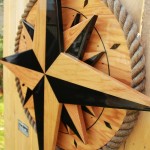
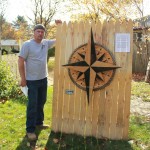
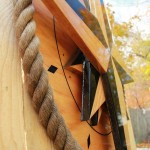
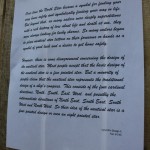
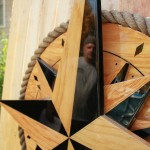
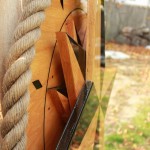
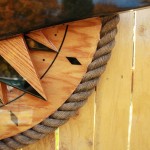
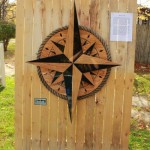
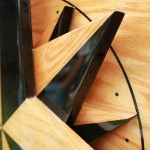
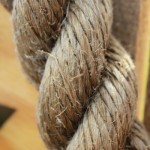
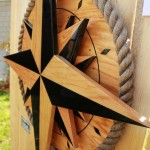
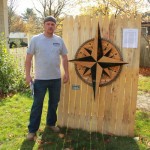
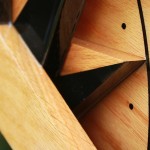
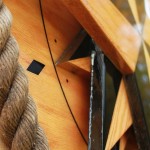
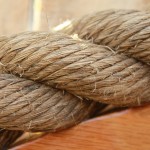
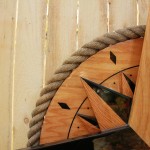
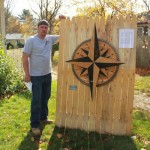
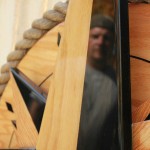
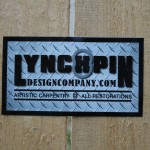
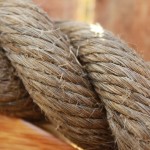
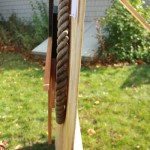

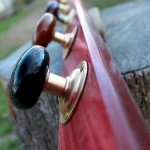
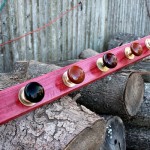
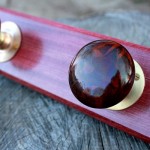
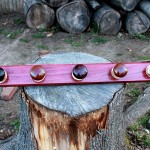
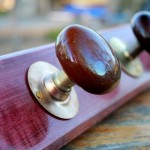
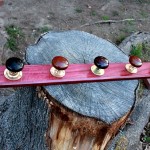
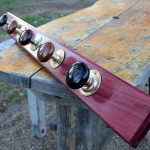
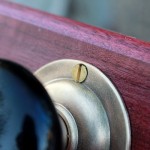
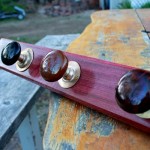
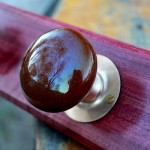

Recent Comments